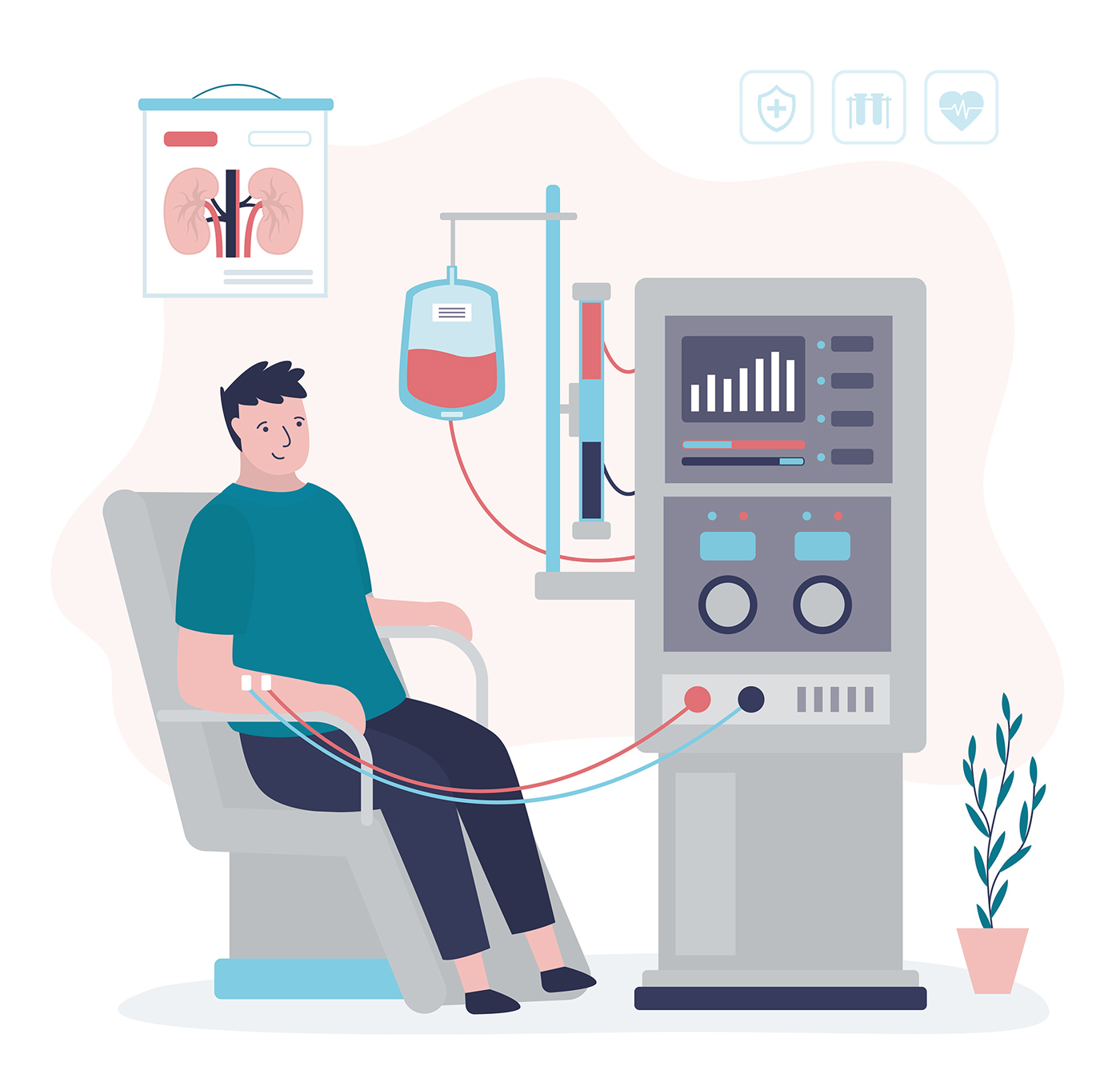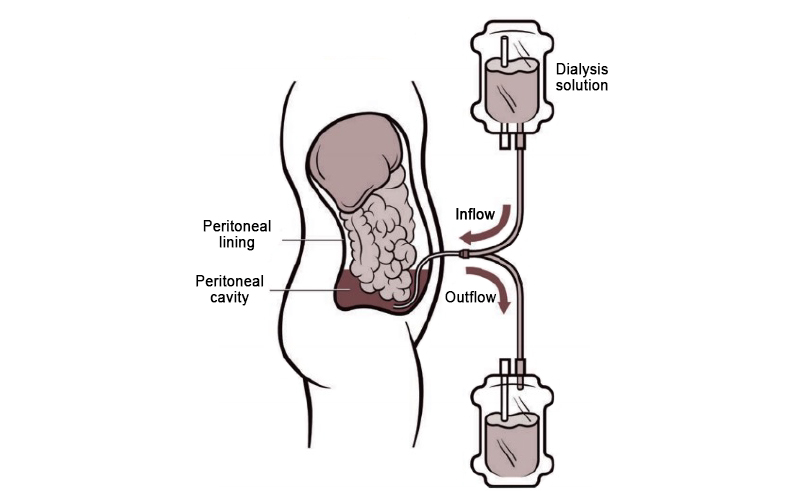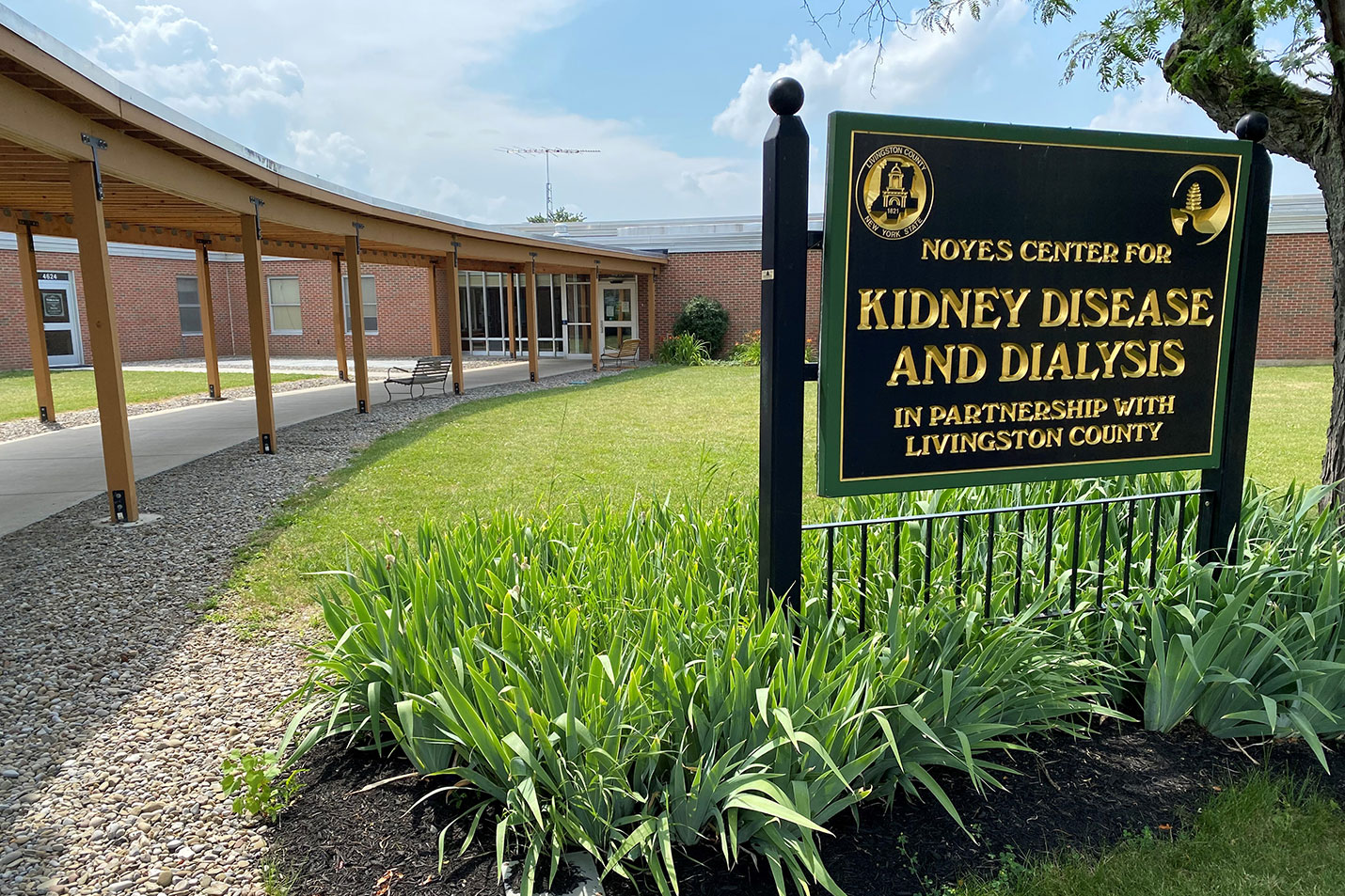Dialysis
Make Appointments & Get Care
What is Dialysis?
Dialysis is a treatment for people who have kidney (renal) failure. Under normal conditions, kidneys filter waste and toxins, remove extra fluid from the blood, and secrete hormones vital for health. Dialysis can perform these duties instead when failing kidneys cannot.
In rare cases, dialysis can also be used to prevent kidney failure if someone has been exposed certain toxic substances or drugs.
UR Medicine's Approach
There are two types of dialysis: hemodialysis and peritoneal dialysis.
What is Hemodialysis?
During hemodialysis, a machine cleans your blood. It takes your blood out, filters it, and then returns it to your body. This machine does the work that your kidneys can no longer do.
Learn more about hemodialysis: Understanding Hemodialysis (Fresenius Medical Care)
How often and how long you need hemodialysis depends on your personal health needs. Your doctor will create a plan that is right for you.
Hemodialysis can be done at a dialysis center or at home. Each option has its own pros and cons.
Hemodialysis at a Dialysis Center
In-center hemodialysis is the most common type of dialysis. Patients go to a dialysis center and stay there for the whole session.
- Treatments are scheduled three days a week, either on Monday/Wednesday/Friday or Tuesday/Thursday/Saturday.
- Each session takes about 4 hours.
- Trained staff will give you your treatment.
- Someone from your dialysis care team is always there to help if needed.
Hemodialysis at Home
Our Home Hemodialysis Program allows you to receive your treatments in the comfort of your own home, giving you more flexibility and independence.
- You can plan your treatment schedule to fit your life. Most people do home hemodialysis about four to five times a week.
- You or a care partner will give the treatments.
- You’ll need a clean, organized space at home for the treatment and to store your supplies.
- A nurse is always available by phone if you have questions or need help.
- You will need 4 to 6 weeks of training before you can safely do hemodialysis at home.
Learn more about home dialysis: Getting your household ready for home dialysis (National Kidney Foundation)

Image: Patient sits beside a hemodialysis machine. Blood flows through a tube in the patient's arm to the hemodialysis machine, where the blood is filtered and returned through another tube to the patient's body.
What is Peritoneal Dialysis?
During peritoneal dialysis a fluid exchange occurs in your belly. Fluid is put into your belly and when the fluid is removed the waste and extra fluid from your blood is removed with it.
- Peritoneal dialysis requires a soft tube (called a catheter) to be placed in your belly during a short surgery that does not require you to stay overnight in the hospital.
- During peritoneal dialysis, a special fluid (called dialysate) is put into your belly through the catheter. The inside lining of your belly works like a filter. It helps remove waste and extra fluid from your blood. After a few hours, the dirty fluid drains out through the same tube, taking the waste and extra fluid with it. This process of putting in and draining out the fluid does the job your kidneys can no longer do.
- How often and how long the dialysate stays in your belly depends on your body size and how much waste and extra fluid needs to be removed from your blood. Your doctor will create a plan that is right for you.
- You or a care partner will give the treatments.

Image: Image shows dialysate entering the belly through the catheter. Once inside, the lining of the belly works like a filter, removing the waste and extra fluid from the blood. When the treatment is complete the dialysate containing the waste and extra fluid drains out of the belly through the same catheter into a designated waste bag.
Where Will I Have Peritoneal Dialysis?
Treatments are typically done at home but can also be done anywhere you have a clean space for your supplies and equipment. Treatments are done every day. You can plan your treatment schedule to fit your life.
You or a family member (caregiver) will give the treatments. You’ll need a clean, organized space at home to do the treatment and store your supplies.
A nurse is always available by phone if you have questions or need help. You will need four to six weeks of training before you can safely do peritoneal dialysis.
There are two types of peritoneal dialysis.
- Continuous cycling peritoneal dialysis
- You are connected to a machine while you sleep.
- The machine moves the fluid in and out of your belly while you sleep.
- Continuous ambulatory peritoneal dialysis
- You do the treatment by hand during the day.
- You usually do this three to five times each day, with one longer treatment at night.
Learn More about Peritoneal Dialysis
Frequently Asked Questions
Yes. If you do hemodialysis at home, you can take your machine and supplies with you. If you get dialysis at a center, the staff can help you find a dialysis center where you will be visiting so you can have your treatments there.
You and your doctor will decide the right time for you to start dialysis. This decision depends on how well your kidneys work, your symptoms, and your overall health. It is important to have regular lab tests so your nephrologist can check how your kidneys are doing.
What Sets Us Apart?
U.S. News & World Reports has identified us as one of the top adult nephrology (kidney) care centers in the country.
Our collaborative approach brings a wide range of expertise and diverse perspectives to patient care, with specialists in cardiology, endocrinology, rheumatology, transplant surgery, and urology working together to develop the best treatments for each patient.
We have a rapidly expanding home dialysis program, and our proportion of patients on Peritoneal Dialysis or Home Hemodialysis exceeds national averages.
Because we’re an academic medical center, our physicians also lead important research studies, with significant grants from the National Institutes of Health and industry-sponsored clinical trials.
Locations
We serve you in the Rochester metropolitan area and surrounding region.
1 location
4616 Millennium Drive
Geneseo, NY 14454
Patient Education & Support
Schedule an appointment with a UR Medicine provider.
Call (585) 275-4517